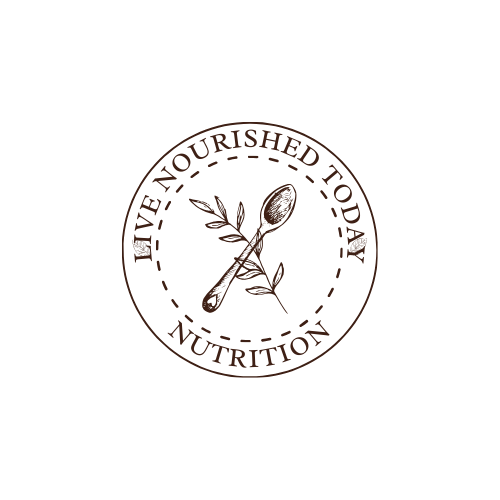Live Nourished Today, LLC
Mapping 4 Types of Common Eating Disorders and Their Symptoms
If you were to ask a sample size of people what comes to mind when they hear the term “eating disorder” you would probably hear many of them describe traits commonly associated with anorexia. While anorexia nervosa is one of the most common eating disorders, there are several others to be aware of. In reality, eating disorders take on different forms and manifest in various ways. Here are 4 types of common eating disorders and their symptoms.
Anorexia Nervosa: As previously mentioned, anorexia is the most well-known eating disorder. It is characterized by restricting food intake. Restriction can present itself in a few ways. For example, some individuals with anorexia may only eat a select few foods while others might give themselves a severe caloric deficit to abide by. Those with anorexia are likely to be underweight, although one does not have to be underweight to have anorexia. Anorexia often looks like:
· Fear of weight gain
· Distorted body image
· Severe calorie restriction
· Being Underweight (compared to those of a similar age and height)
Bulimia Nervosa: Like anorexia, bulimia nervosa tends to develop in adolescence or young adulthood. Both eating disorders are categorized by limiting caloric intake, however, bulimia includes a purging element. People with bulimia use purging as a way to expel food from the body and reduce caloric intake. The act of purging (which takes on several forms) will most often occur following a binging episode. Subsequently, individuals will purge in a multitude of compensatory ways (vomit, laxatives, enemas, diuretics, and more). Bulimia often looks like:
· An onslaught of negative physical symptoms including tooth decay, acid reflux, ulcers, and more.
· Continuous binging and purging despite negative consequences.
· Fear of gaining weight, despite resting at a “normal” weight.
· Binging on foods the individual would normally avoid.
Rumination Disorder: Rumination is a newly recognized disorder and was first discussed in the DSM-5. In this particular disorder, individuals will voluntarily regurgitate food they have previously eaten. Following the regurgitation (usually within a 30-minute period of food consumption) the individual will re-chew and consequently re-swallow or spit out the food. Rumination affects people during all stages of life and often looks like:
· Repeated regurgitation of food due to a voluntary catalyst.
· Weight Loss
· Malnutrition
· Tooth decay and bad breath.
· More common in children.
Binge Eating Disorder: Like rumination, binge eating disorder was also formally recognized in the DSM-5 (released in the year 2015). People with Binge Eating Disorder (BED) lack control over their consumption of food and tend to eat significantly more than their peers would in similar situations. Like bulimia, BED is typically classified as overeating episodes consisting of large quantities of food. Unlike bulimia, there are no compensatory behaviors to “balance” the binging episodes. As a result, those with BED are more likely to be overweight or obese. Despite its newer recognition, BED is reportedly the most common eating disorder and roughly 2.8% of adults will struggle with it in their lifetime. Binge eating disorder often looks like:
· Eating when full or not hungry
· Secretive and isolated eating to avoid embarrassment
· Consumption of large quantities of food
· Eating until uncomfortably full
· Shameful feelings following an episode
· Increased risk of being overweight or obese.
And More: While anorexia, bulimia, rumination, and binge eating disorder are some of the more common eating disorders, there are plenty of others to consider. An individual may also suffer from a subset of the main disorders, classified by other symptoms. Other less common eating disorders include orthorexia, diabulimia, avoidant/restrictive food intake disorder, and more.
https://www.healthline.com/nutrition/common-eating-disorders#bottom-line
https://www.snhu.edu/about-us/newsroom/health/types-of-eating-disorders



